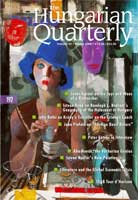A Shock and its Aftermath The Prague–Korčula–Budapest Triangle
A Shock and its Aftermath The Prague–Korčula–Budapest Triangle
Author(s): János Rainer M.Subject(s): History
Published by: Society of the Hungarian Quarterly
Summary/Abstract: The year 1968 started well for János Kádár, but ended badly. For the supporters of economic reform, the Prague Spring held the promise of allies next door. Moscow, on the other hand, was suspicious from the beginning, not just of Prague, but of Budapest as well. In July, Moscow opted for military intervention. Kádár was faced with some hard choices. Until mid-summer, he had tried to sweet-talk the Soviets out of intervening, even while attempting to persuade Alexander Dubček to be less outspoken in his public statements, and more prompt to reassure the Soviet leadership. Eventually, however, he agreed to Hungary taking part in the military intervention. On August 21, 1968, the armies of five members of the Warsaw Pact—600,000 soldiers from Bulgaria, Poland, Hungary, the German Democratic Republic and the Soviet Union—crossed the Czechoslovak borders, and put an end to the process of reform and liberalisation spearheaded by Alexander Dubček. The armies of four of the countries withdrew from Czechoslovak territory within a few weeks, but a treaty was signed legalising the presence of the Soviet forces of intervention: nearly 90,000 Soviet Army men were “temporarily” stationed in the country for the next 23 years.
Journal: The Hungarian Quarterly
- Issue Year: 2008
- Issue No: 192
- Page Range: 129-138
- Page Count: 10
- Language: English

